Magnetic Connectors: The Latest in Hybrid Connectivity for e-Mobility Applications
Hybrid magnetic connectors provide the same power and signal capabilities as traditional connectors in a robust, self-aligning, zero-force, self-mating interface designed to address the needs of various e-mobility applications.
Hybrid magnetic connectors with self-locating designs offer an innovative alternative to standard mechanical coupling connectors for powering and light electric e-mobility vehicles (LEVs) such as wheelchairs, drones, and delivery robots. These connectors provide reliable power and signal transmission within the same connector interface and their magnetic locking mechanism eliminates the need for mechanical retention. They were originally designed to support battery management systems (BMS) on electric bikes and can withstand the frequent connections and disconnections required for charging and changing the batteries. They are capable of handling power transmission voltages up to 60VDC and 40A.
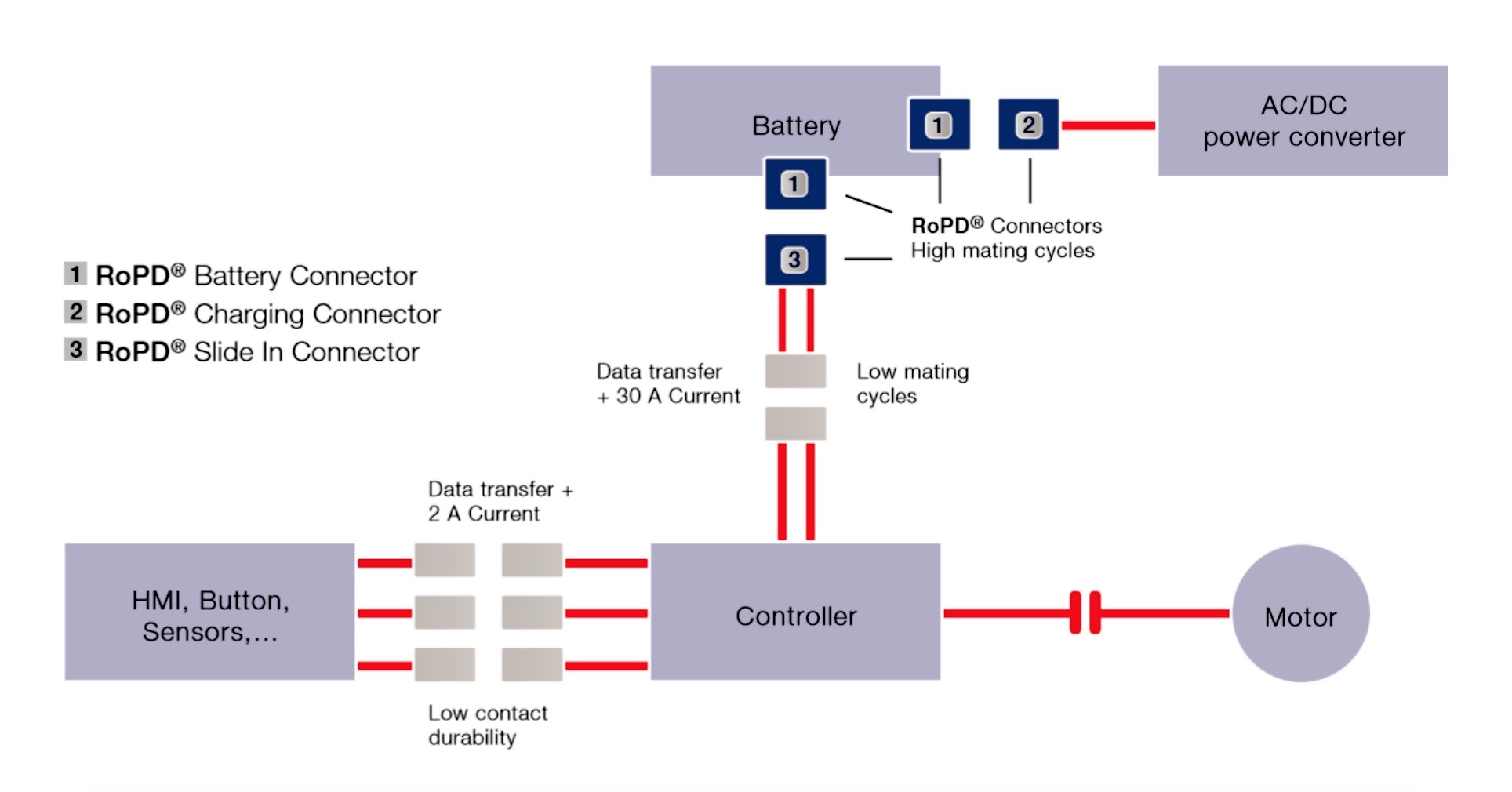
Rosenberger’s magnetic RoPD (Rosenberger Power Data) Connectors provide an interface between the power supply and battery unit.
Magnetic self-mating connectors are ideal for eBike applications and e-mobility aids, such as wheelchairs and scooters, because they offer quick and easy, user-friendly mating. They can withstand sudden disconnections, even in cases where the user forgets to unplug the charging connector from its charging source before driving away, and they are suitable for autonomous charging systems. Unlike standard pin and socket connectors that rely on latches and twist locks to ensure a reliable connection, magnetic connectors can be mated and un-mated by users with limited dexterity or strength.
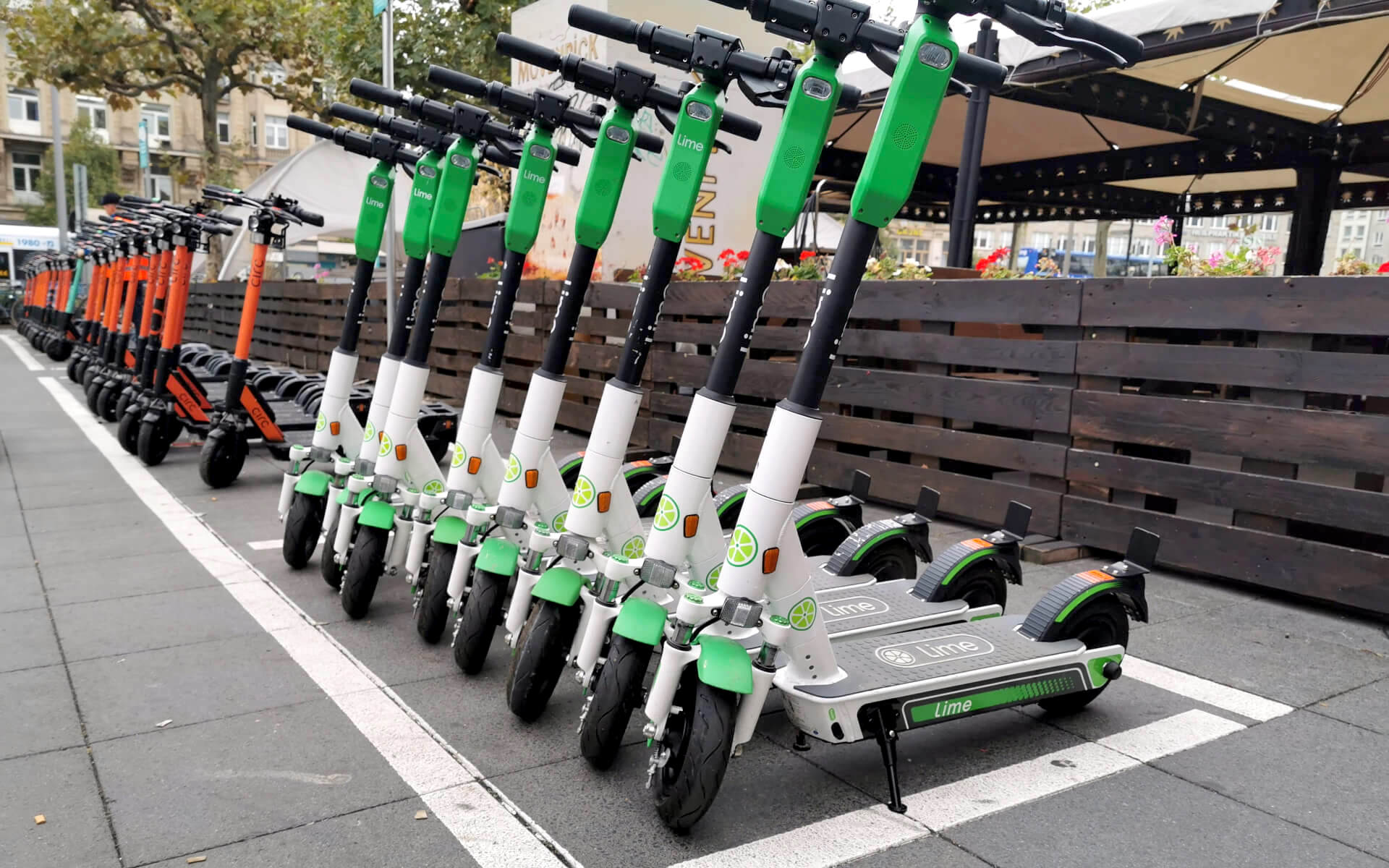
Other vehicles that require frequent charging, such as UAVs or drones and unmanned ground vehicles like delivery and warehouse robots, also benefit from magnetic connectors due to. In some cases, these vehicles may also require connector solutions that support autonomous charging. Magnetic self-mating connectors allow operators to plug and unplug LEVs from power sources without latching or twisting and can support autonomous plugging and unplugging, as these connectors are 100% self-locating, self-aligning, reliable, and simple.
Magnetic Connector Overview
Magnetic connectors for e-mobility applications are typically hybrid power and data connectors that combine self-aligning and self-locating functionality with space and weight savings. They remain mated until a force is applied to override the magnetic retention force specified for a given interface, whether intentional or accidental (e.g., cable snags), and are designed to safely disconnect without causing equipment damage. Magnetic hybrid connectors are widely available with multiple pin and housing configurations and in both board-mount and cabled options to support eBikes, wheelchairs, scooters, drones, warehouse robots, and other LEVs.
Compared to magnetic connectors, conventional pin and socket connectors with latches or twist locks have a much greater risk of interface damage and subsequent equipment malfunctions when their cables are subjected to unintentional pull forces. Interface damage typically requires connector replacement. Moreover, with standard pin and socket connectors, the mating and un-mating process becomes more complex and requires greater user involvement, which is not desirable in cases where the users have limited mobility or dexterity.
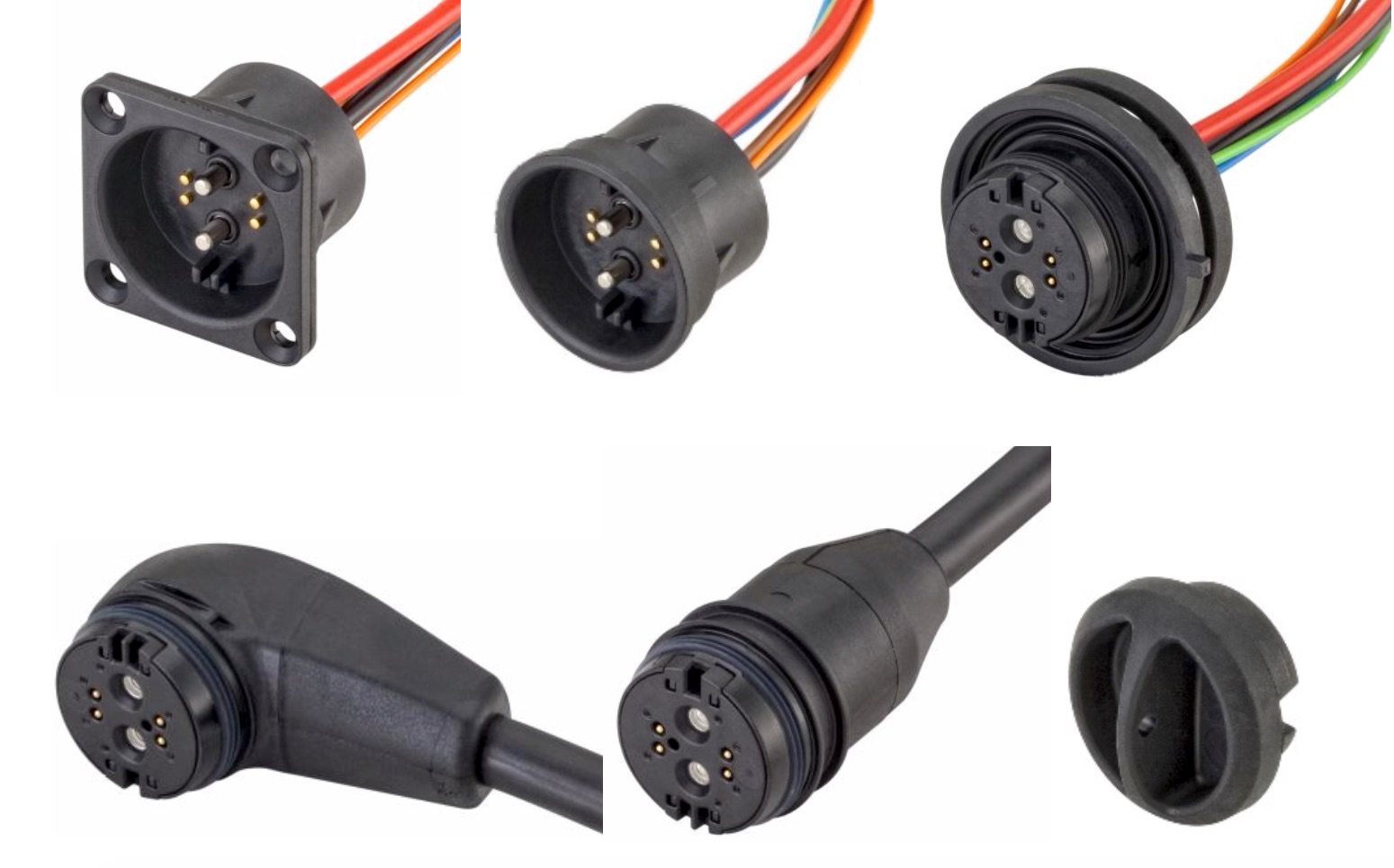
Rosenberger’s magnetic RoPD Connectors have a robust, waterproof design and are available in multiple configurations to address design challenges including space constraints, data transmission requirements, and environmental conditions.
The self-aligning features on these types of connectors, combined with the attraction force of the magnets, means zero mating force is needed to achieve engagement. Magnetic connectors can also be used for autonomous plugging and unplugging, as some variants are designed with several degrees of float to easily enable the mating of misaligned connectors. Once mated, hybrid magnetic connectors achieve a steady contact pressure that supports the simultaneous, high-reliability transmission of both data and power. To ensure that these connectors stay mated throughout their intended use, they are subjected to shock and vibration testing with a profile that simulates real-world situations. Magnetic connectors are also designed for durability, with single connector pairs routinely specified for more than 2,500 mating cycles.
To meet the environmental requirements for LEVs and other e-mobility vehicles, magnetic connectors offer protection against environmental hazards, including water, humidity, dust, and corrosion that can result from exposure to sea spray. Magnetic connectors often provide a minimum IP67 rating in their mated state and come with optional self-aligning protection caps to protect the interface from environmental conditions when the system is unmated. These connectors are available with UV resistance and may be rated for temperatures spanning -40°C and +65°C.
Design Considerations for Battery Connections in e-Mobility Devices
Magnetic connectors can be used to establish connections between power supplies and rechargeable batteries and to connect batteries to e-mobility devices. Both points of connection present design challenges. Connector solutions for connecting power supplies to rechargeable batteries must have ergonomic features that allow users to easily plug and unplug the charging connectors. They must also have features in place to reliably protect users from accessing live power contacts.
For ease of handling, charging jacks can feature an overmolded polyurethane housing for cable bend protection and a more ergonomic grip. To limit access to the power and data contacts, charging jacks are designed with recessed pins that prevent users from ever being exposed to live contacts. With magnetic connectors, there is no need for hot-plugging capabilities, as the data contacts are made to engage before the power contacts and thus only activate the power line after connectors are fully seated, which effectively eliminates the risk of arcing and shorting and protects operators from live powered circuitry.
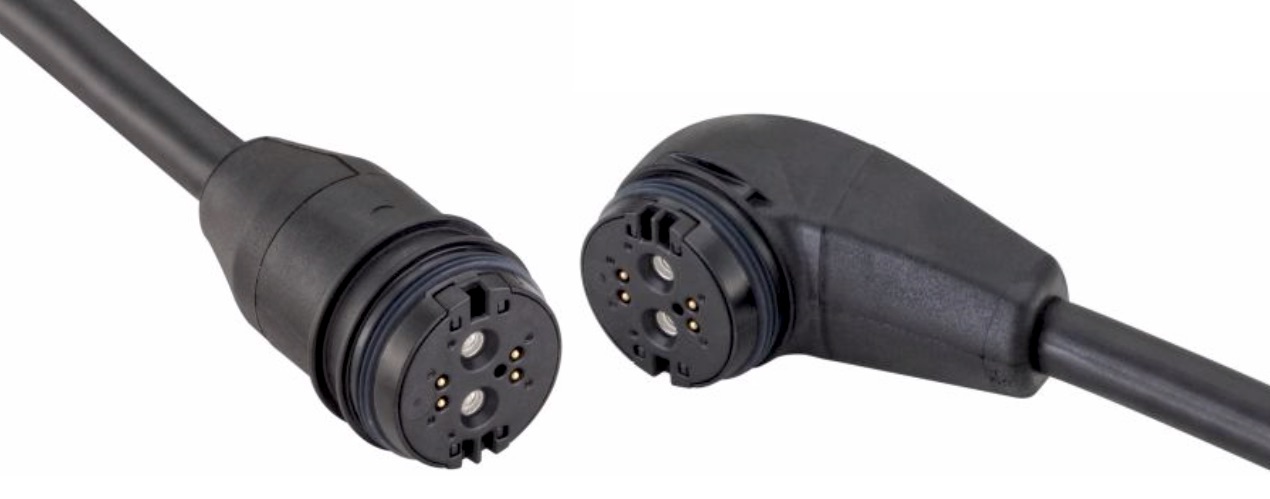
Rosenberger’s magnetic RoPD connector line offers both straight and right-angle configurations equipped with an overmolded housing that provides cable bend relief as well as a more ergonomic grip.
Connections between batteries and vehicles also presents design challenges, including space constraints and the chance for misalignment between the connector halves given by the tolerance of the connector’s mounting holes. Connector systems used for e-mobility applications must address both constraints to ensure ease of installation and prevent stress to the connector contacts during mating. Space constraints are addressed by offering multiple configurations, including board-mounted and cabled solutions with round and square flanges and options for screw-mount, slide-in, or press-fit installations. To address issues that may arise due to misalignment, magnetic connectors are often designed to be flexibly seated within the flange, which allows for several degrees of shift during mating while still ensuring a reliable connection.
Battery Management Systems in e-Mobility Devices
Most batteries for LEVs come equipped with a battery management system (BMS). A BMS is an electronic system that manages the battery by monitoring parameters such as state of charge, voltage, and temperature and uses this information to optimize charging and battery life. A BMS uses additional low-speed data contacts to communicate with the battery and external systems.
Traditionally, power and data requirements for smart charging are addressed with the use of a dedicated connection for power and a separate connection for data. Now, these requirements can be met with hybrid connections that combine both power and data within a single, space-saving connector equipped with mechanical locking mechanisms. The use of separate connections for power and data brings about issues with spacing and the need for additional connector installation, assembly, and validation. Hybrid power and data connectors with mechanical locking can also pose application challenges, especially when mating and unmating connectors on narrow and space-constrained eBike frames and wheelchairs, where batteries are often installed out of users’ reach. Magnetic connectors address both issues by combining power and data in a single interface and enabling self-aligning magnetic mating, so when the plug approaches the socket, it is attracted by the magnetic force and virtually slides into the socket. This mechanism makes for efficient, accurate connections and comfortable handling.
Smart batteries employ communication bus systems (BUS) to transfer data between components for battery management. BUS protocols for LEVs are based on the automotive CAN standard and require two signal contacts for data transmission, along with the power contacts. The standard magnetic connector offerings for BMS combine two power contacts and up to six data contacts in a single hybrid connector that self-locates for ease of installation and supports the CAN protocol to enable battery data collection and transmission. The data contacts can handle up to 12V and 2A per pin, which makes them capable of handling the data rate demands of the CAN BUS and EnergyBUS (Europe) implementations on battery-operated vehicles.
Magnetic Connector Applications: Designing for Convenience
eBike frames, much like standard bike frames, are narrow and at times difficult to access when wiring battery-charging hardware. As such, battery connection products should offer a wide range of configurations that support ease of access and facilitate battery swapping. The case with UAVs and UGVs is quite similar; in these applications, there is not a lot of space for battery connections, and the batteries are often swapped to optimize operation time. Both the mating frequency and space constraints must be taken into consideration when designing connectivity solutions for e-mobility devices.
Other UAVs and UGVs require autonomous charging, especially for commercial applications where the device is expected to access a charging station, plug into its respective charger, and upon charging, leave the charging station to continue performing a given task. This is one of the applications where magnetic connectors have revolutionized the market without the need for expensive inductive charging solutions that require additional equipment hardware.
The electric mobility aid market also has unique connectivity challenges that can be addressed with the use of a magnetic self-aligning, self-locating, and zero-force mating mechanism. Magnetic connectors can improve the mass deployment of e-mobility scooters, such as the ones used in retail stores, as they allow the user to simply drive away from the charging station without unplugging the vehicle. Upon return to the charging station, the scooter is easily plugged back into its charger. Magnetic connectors offer other benefits for mobility aid users as well. For instance, with standard pin and socket connectors, individuals with limited dexterity require caregiver assistance to charge their e-mobility aid. Alternatively, magnetic battery charging connections can provide some level of autonomy to these users by allowing them to plug and unplug their e-mobility devices without assistance.
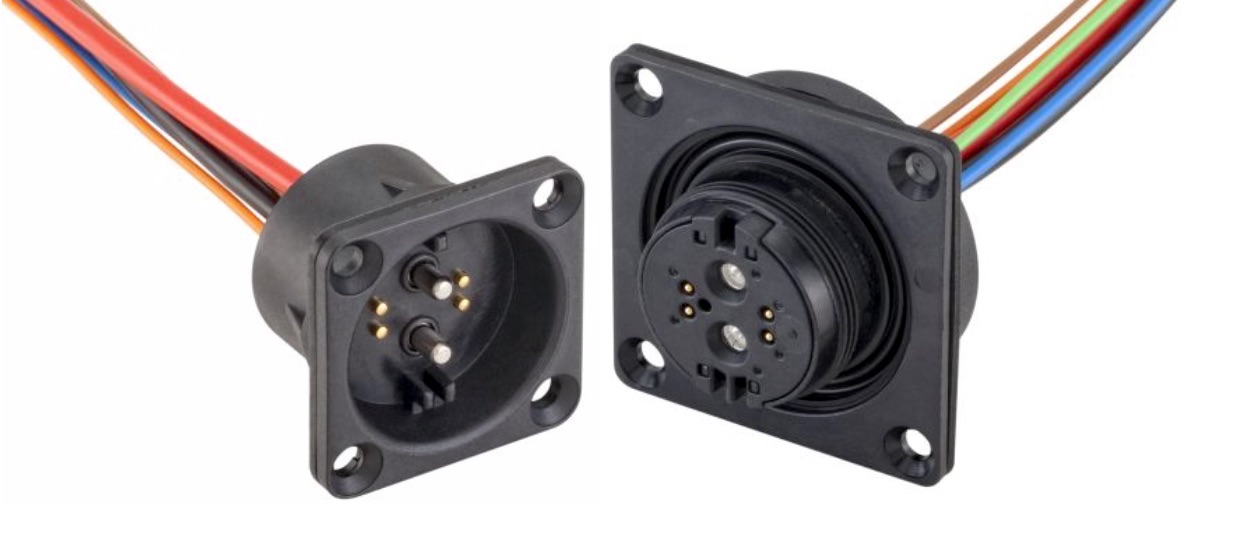
Rosenberger’s magnetic, self-mating RoPD connectors have a robust, waterproof design, are rated for up to 60V, 40A, and 2,500 mating cycles, and are ideally suited for electric charging applications in wheelchairs and scooters.
Smart LEV Connectivity
Self-aligning magnetic connectors not only allow for effortless battery connections in a multitude of e-mobility applications; they also require less space and allow for simplified implementation, assembly, and use. These connectivity solutions are robust enough to meet the challenging demands of the LEV market, ranging from high numbers of mating cycles to environmental hazards, harsh vibration profiles, and battery management systems. Electric mobility connectivity will continue to evolve as the demand for additional data transmission and power requirements increase, and magnetic connectors will continue to evolve with the applications.
For more information, visit Rosenberger online.
Like this article? Check out our other Connector Basics, Robotics, Connected Vehicle, and I/O Connector articles, our Transportation, Medical, and Consumer Electronics Market Pages, and our 2020 and 2019 Article Archives.
- The Future of Field Device Infrastructure - April 11, 2023
- Connect, Network, Evolve: The Intersection Between Reliability and High-Speed Industrial Communications - September 6, 2022
- The Case for Single-Pair Ethernet in Industrial Applications - August 10, 2021





